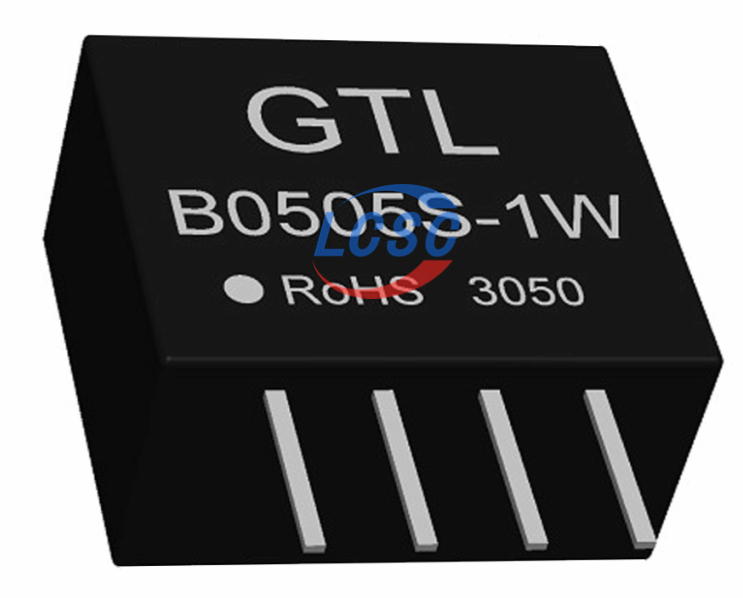Hello everyone, this week LCSC supplier GTL-POWER will introduce the basics of power modules to you. In the following article, GTL-POWER will give you a detailed introduction to what a power module is and how to choose a power module.
What Is a Power Module?
Power modules are power converters that can be directly mounted on printed circuit boards, generally divided into AC to DC or DC to DC converters. With the development of technology, power supplies are becoming more modular and compact, leading to the emergence of power modules. They have the highest level of integration, integrating the main circuit of the switching power supply into the chip, which can achieve wide-frequency modulation, isolation, and a variety of protection functions.

The common basic principle consists of the following parts: an input rectifier filter, which includes a rectifying bridge and an input filter capacitor. A monolithic switch power supply includes a power switch tube, controller, and MOSFET. There are also high-frequency transformers, leakage clamp protection circuits, optocoupler feedback circuits, output rectifier filters, and bias circuits, among other components.
What Are the Characteristics of the Power Module?
Power modules can generally adapt to an input voltage range of 85~265V AC or 100~370V DC through the input rectifier filter, with frequency options from 47~400Hz, usually 50/60Hz. Their compact size, advanced integration, and cost-effective nature allow for operation with minimal peripheral circuits and a handful of discrete components. They also have the advantages of high efficiency, high reliability, and flexible design, and have now become the preferred integrated circuit for the development and design of small power switching power supplies.
What Are the Application Areas of Power Modules?
The selection of a power module scheme involves low technical requirements, a straightforward design, minimal space usage, and high reliability, with the flexibility to change the scheme at any time. To modify product design, one simply needs to parallel or replace the power module. Consequently, power modules are extensively utilized across various sectors, including industrial control, mechanical equipment, maritime, aerospace, telecommunications, military, data communications, handheld electronics, instrumentation, LED lighting, smart technology, power systems, rail transport, security, mining, healthcare, automotive electronics, and beyond.
Currently, it is nearly impossible for a single power module to successfully undergo EMC tests such as SURGE, EFT, CE, RE, and so on. Even though some top-tier products boast long lifespans, high reliability, and effective EMI control, their resistance to interference remains insufficient. Most switching power supplies manage to pass UL and 3C certifications, ensuring their EMI performance, but modularization causes them to fail due to the EMI testing methods. To ensure equipment passes EMC tests, it is essential to also design the peripheral circuits effectively.
How to Choose a Power Module?
When selecting a power module, it is advisable to choose one that operates within 30-80% of its rated power, as performance indicators are typically stable and reliable within this range. There are commercial, industrial, and military grade classifications, each with varying requirements for working temperature, vibration, humidity, etc. To ensure long-term stable and reliable operation of the product, the actual application environment should be taken into account when making the selection.
- Rated Power:
It is generally recommended to operate the power module at 30~80% of its rated power.
- Operating Frequency:
Higher operating frequencies result in smaller output ripple noise, but they also demand higher quality materials for components, leading to increased efficiency and cost.
- Power Loss and Efficiency:
Under specific output power conditions, lower module loss and higher efficiency lead to reduced temperature rise and extended lifespan.
- Packaging Form:
For a given power level, the goal should be to minimize volume to ensure system safety, reliability, and scalability.
- Temperature Range:
There are generally commercial, industrial, and military grades to choose from, considering the actual required working temperature range, and selecting from them. Different temperature grades use different materials and processes, and the prices of different grades differ greatly.
- Isolation Voltage:
A high isolation voltage can ensure smaller leakage current of the power module, higher safety, reliability, and EMC characteristics.
- Stability and Reliability:
In the product, it is necessary to consider whether the product is good in harsh environments or extreme situations.
Factors to Consider When Choosing a Power Module Manufacturer
Look at your own requirements for the product compared with brands, renowned brands are more well-known, but the price is higher.
Look at the product design standards. Power supply module design is a rigorous process, such as reliability design standards, derating standards, electrical safety standards, EMC standards, etc. You can communicate with the manufacturer’s designer before purchasing.
Look at the materials used in the product. From the materials, you can see the quality and positioning of the power module manufacturer, and a good material determines a good quality.
Look at the product certification. A good certification is a test of the manufacturer’s technical standards. The cost of product certification is not low, and they will also verify the manufacturer from time to time, so it is trustworthy.
When purchasing power module products, you should compare the product prices and characteristic indicators more, look more and compare more, avoid falling into the pit and taking detours, choose the power module manufacturer with strength in the market, and purchase its products. Big brands have strength and more security. Visit GTL-POWER brand page now to view its power modules and other products at LCSC.
